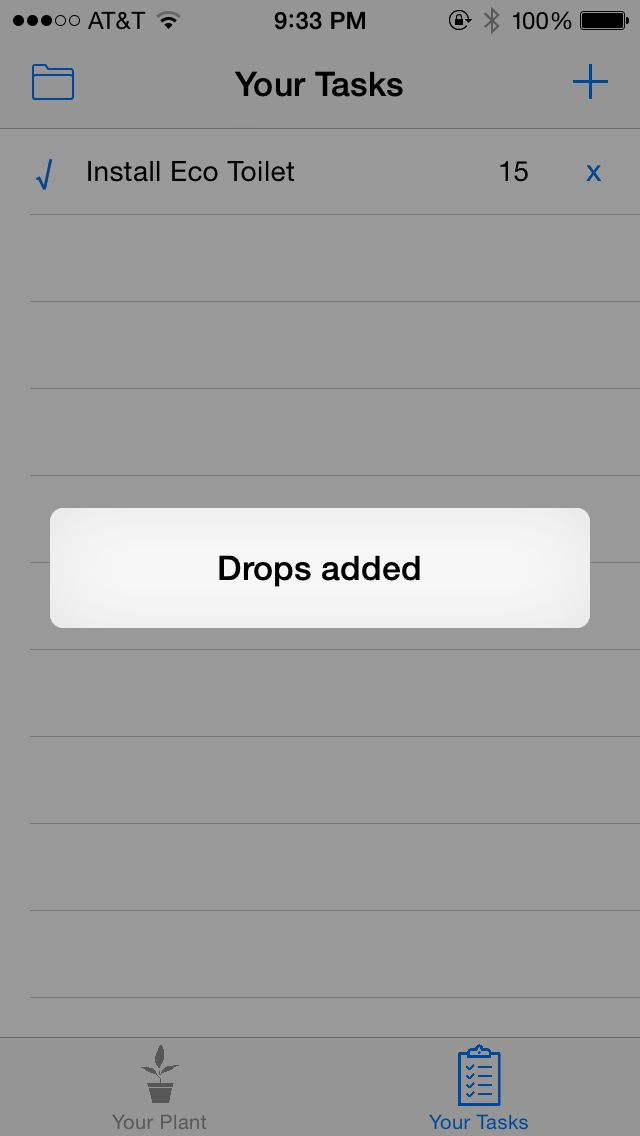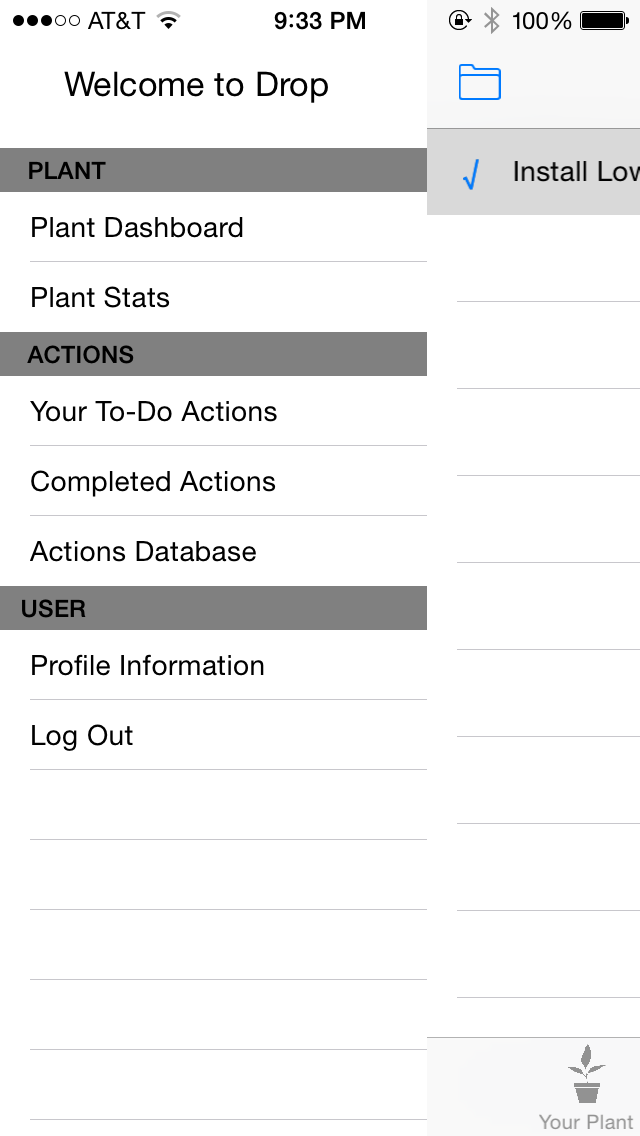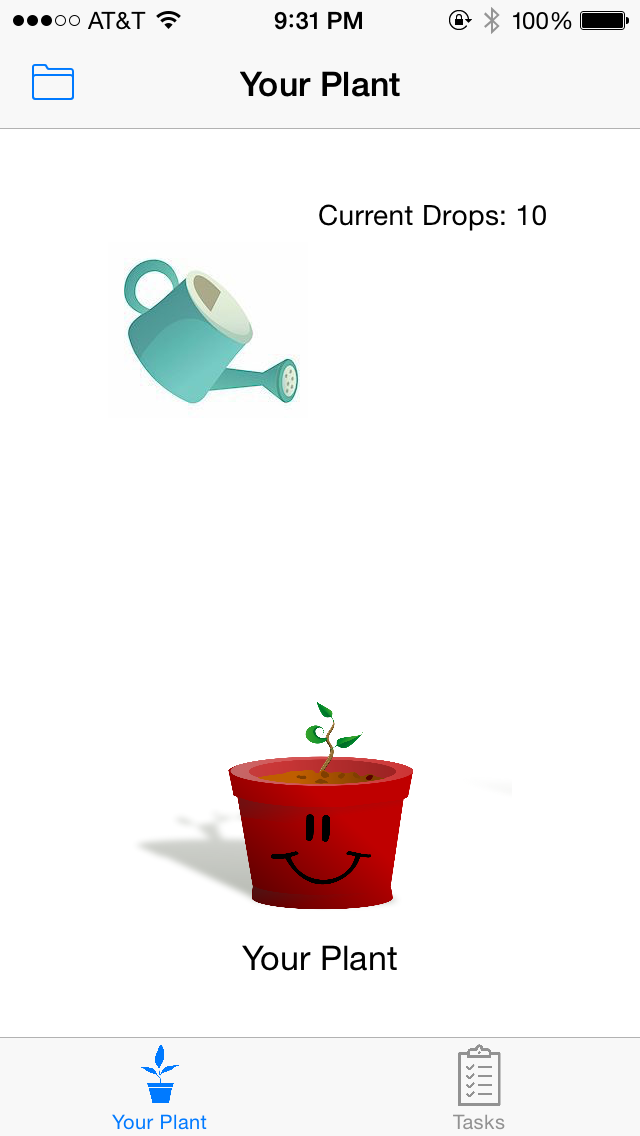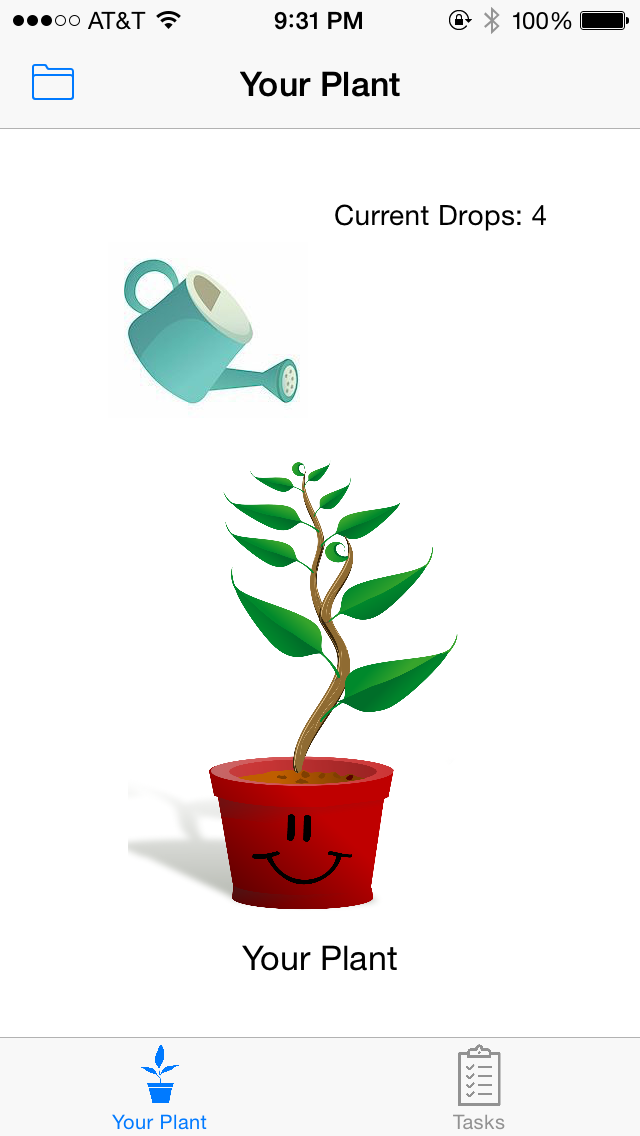


Updates from Medium Fidelity Protoype
Drop is a gamified water use awareness and reduction application to encourage more sustainable behavior.
Heuristic Evaluation Updates
2-3: User control and freedom
hamburger menu doesn't appear on all screens
2-7: Flexibility and efficiency of use
checklist navigation is buggy (buttons don't work)
2-1: Visibility of System Status
"check" on various screens has different meaning
2-5: Error Prevention
only one box for email and password
2-5: Error Prevention
How does a user "spend" a drop?
2-4: Consistency
formatting for "My Checklist", "New Tasks", and "Completed Tasks" doesn't match
2-2: Match between system and real world
When users "uncomplete" a checklist item, what happens?
Also a few others: add signout, make all buttons look the same, fix text alignment

Prototype and Limitations
We created the high-fidelity prototype using Objective-C in xCode, because a team member had iPhone programming experience and all three of us use iPhones. Creating an iPhone app was a good choice because we are familiar with Apple products, layout, and use habits, but the major downside was that only the team member with Objective-C experience could really contribute to the coding of the prototype. We hardcoded a fairly limited list of suggested actions users can take to reduce water consumption. In a final version of the app there would hopefully be far more suggested actions to keep the app useful and fun and allow users to get more creative with water conservation and continue saving water over time.
Changes and Justifications
Our app went through very drastic changes as the design process progressed. At all stages we worked to encourage and motivate resource-use-reduction, but the focus on water and gamified technique were only introduced in the second medium-fidelity prototype. The initial idea, pictured in figure 1, was to create a sort of resource hub that would allow users to track and learn about their resource usage in many areas. This would involve entering their location or using location settings on their phone, and then adding more information about their energy/water/etc bills. The app would compare these data points to information about the nature of the resource in that particular area and estimate how green the user's lifestyle is, presenting graphs of the user compared to other users, people in general, and themself over time. Feedback indicated that the app seemed too utiliarian and not sufficiently engaging to motivate people who didn't already care a great deal about reducing resource usage. In an attempt to make the app more "fun", we added social networking aspects and information about actions to take based on the information gathered about the user. The app would connect them to societal/political actions to take, information about their resource story, and updates from their friends and neighbors. At this point we began focusing primarily on water, although we still expected to build out to other resources at some later point. After feedback we received indicated that the app seemed overly complex and not terribly interesting, with a slow turnaround for data entry and response, we completely revamped the plan and moved toward gamification. We created a second medium-fidelity prototype to represent the new gamified concept, with actions to complete and the basic idea of a garden to care for using points earned for completing green actions. We focused definitively on water use reduction at this point, since it only made sense to save water and water plants -- saving electricity or using less natural gas did not intuitively lead to caring for a garden. The high-fidelity prototype is very similar to the second medium-fidelity prototype, but problems with the UI based on the abilities of the prototyping tool we used in the earlier prototype were fixed.
